Mantle convection (Fluid dynamic modelling)
Geodynamic studies allow to make physically consistent predictions of the surface expression of mantle as a thermomechanical driver. The mantle provides the forces to suport large-scale horizontal motion as plate tectonics, as well as transient vertical deflection due to upwellings and downwellings in the mantle.
Our understanding of the present-day mantle flow state has much improved over the past decades, reflected in models that are consistent with first-order features.
Global compilation of stress indicators
Understanding the intricate dynamics of mantle flow and their influence on lithospheric stress patterns is critical for assessing reservoir responses to potential CO2 or nuclear waste storage, as well as for hazard and risk assessment. Stress patterns play a first-order control in the mechanical response within inherited tectonic structures, with varying stress sources governing different spatiotemporal scales.
The World Stress Map (WSM) project serves as a primary observational dataset to validate our understanding of Earth's dynamics through a global compilation of crustal stress indicators.
Stresses from an asthenosphere flow ansatz
We aim to understand the role of mantle flow as a stress driver by generating stress fields from an analytical representation of upper mantle flow, derived from the superposition of steady-state flow models. Our approach allows us to build first-order expectations and conduct fast hypothesis testing for upper mantle flow states.
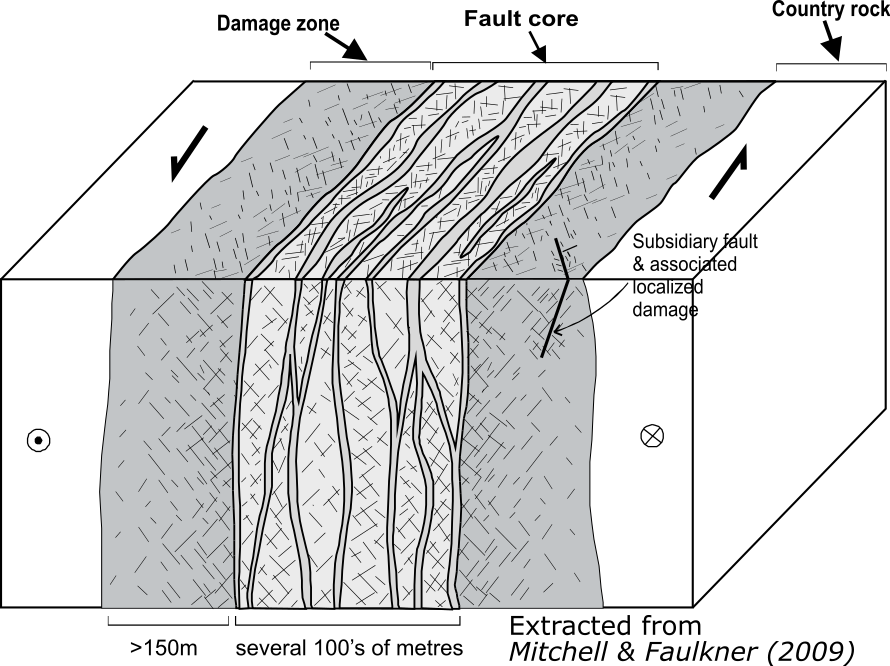
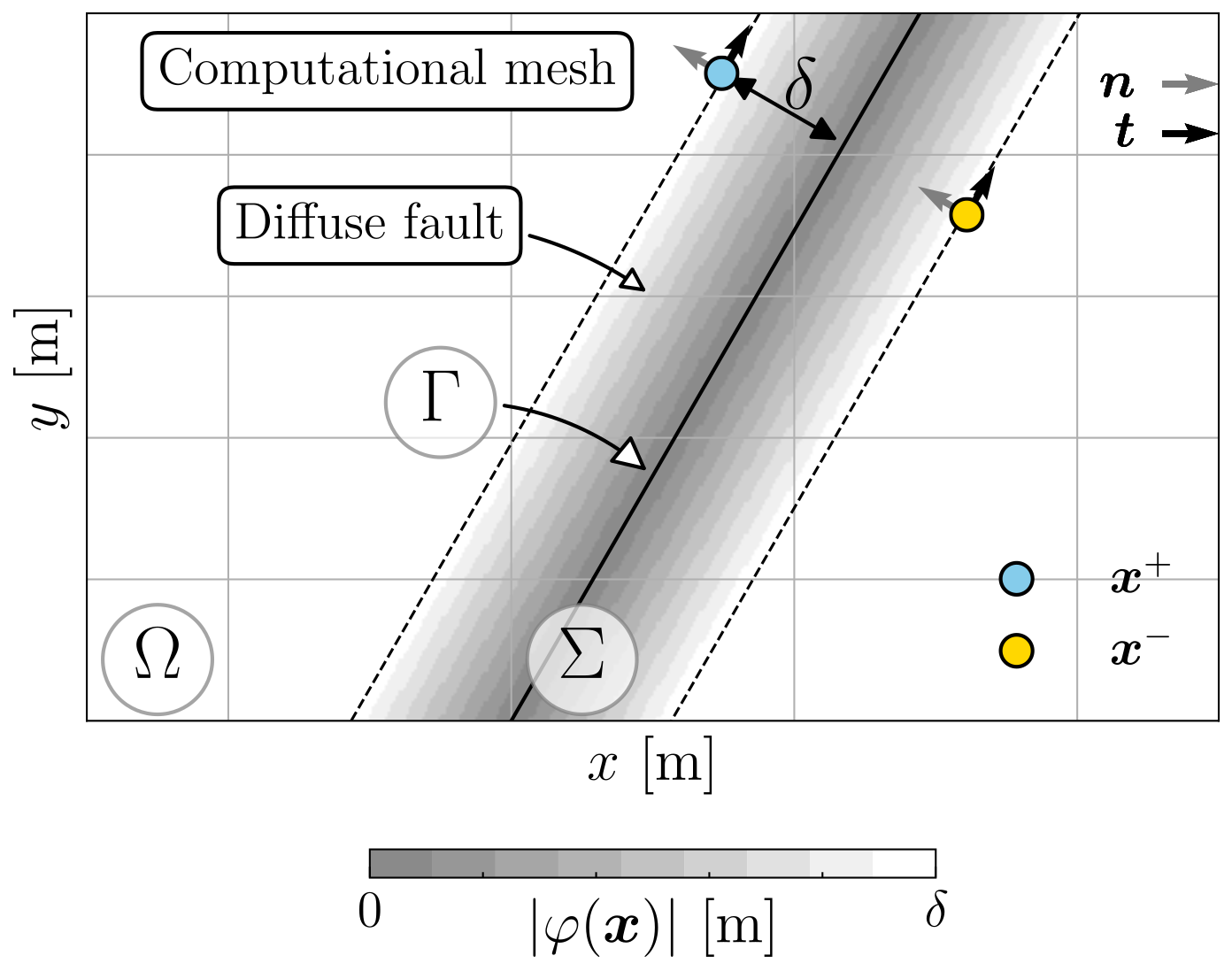
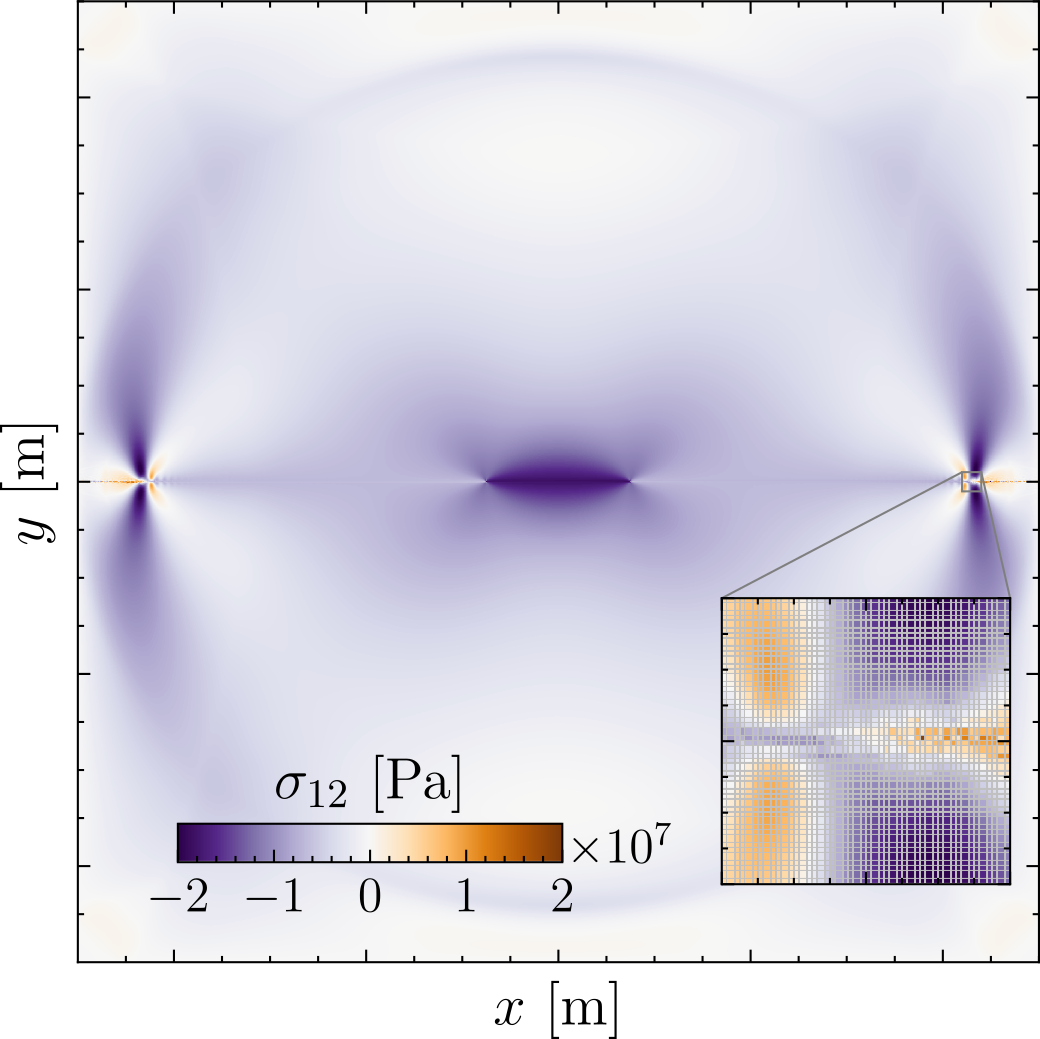
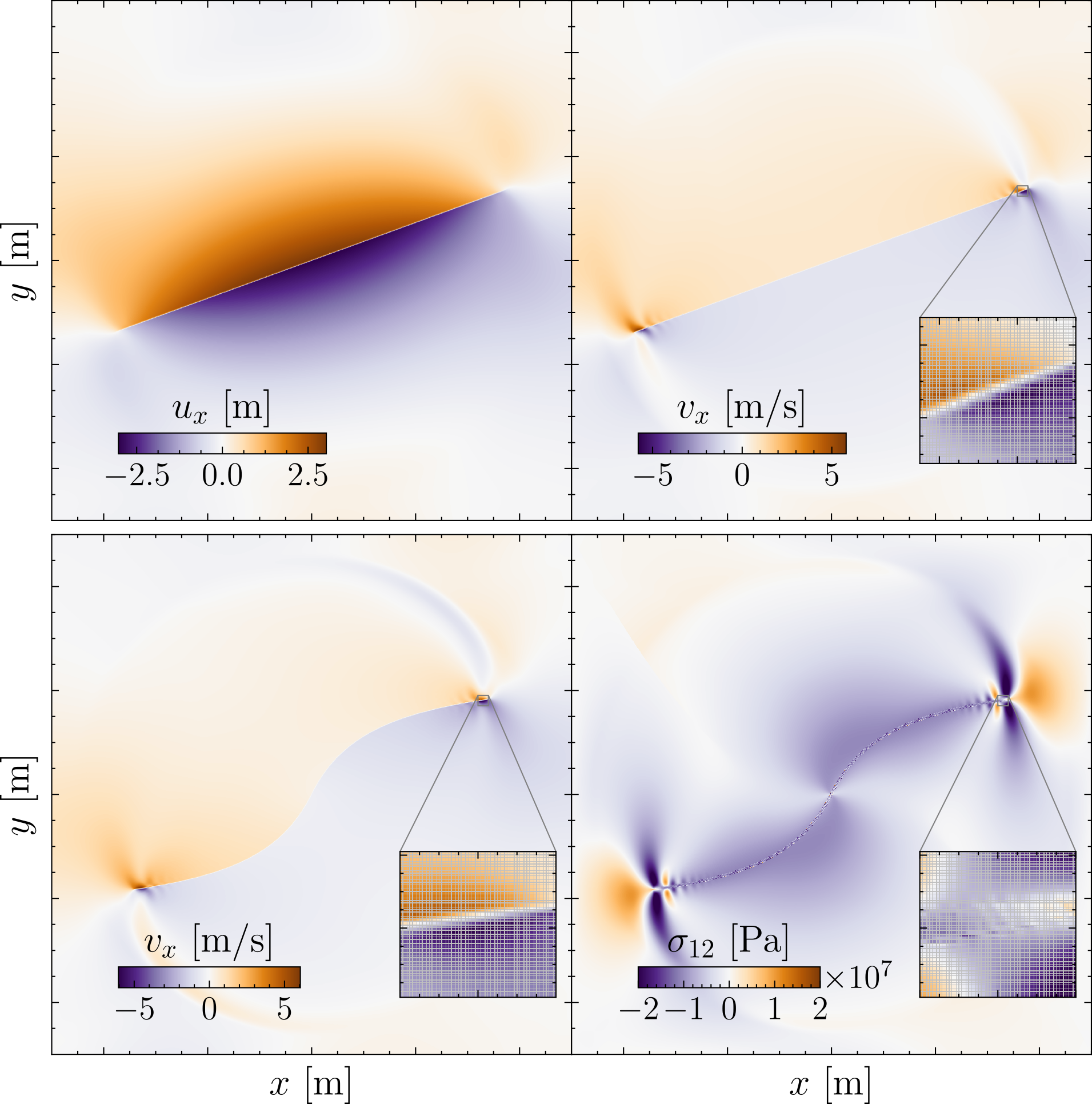
A diffuse interface model for dynamic rupture
Faults are zones of broken and damaged materials, with a fault core region full of fractures. When we simulate earthquakes, we usually simplify these faults to flat planes that experience friction while situated within a host rock.
A different way to represent faults in these simulations is using the 'stress glut' method, which models the faults as areas where the earth's crust gives way under stress. However, this method can be problematic, leading to inaccuracies, particularly when a fault crosses a grid cell of the computational domain used for model calculations.
We tackle this issue by applying a method that smooths out the stress field using a steady-state phase-field model. We find that our method can recreate realistic earthquake behavior while avoiding the sharp transitions that often occur in traditional models.
Our method retains the simplicity of the stress glut approach, making it easy to incorporate into existing earthquake simulation software.
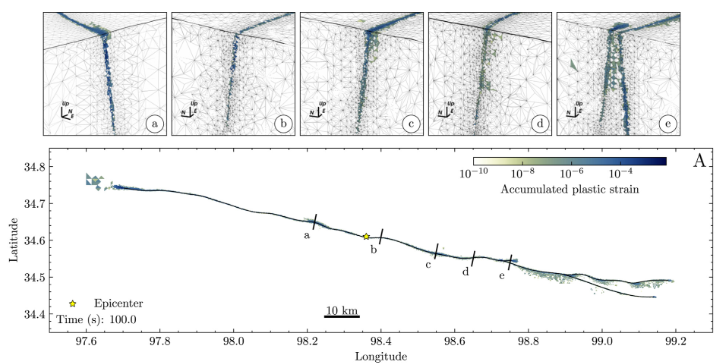
Dynamic rupture modelling of the 2021 Maduo earthquake
On May 22, 2021, a magnitude 7.4 strike-slip earthquake occurred in central-east Tibet with episodic supershear suggested by geodetic and seismological inversions. Here, we build a physics-based 3D fully dynamic model, informed by regional tectonics, geomorphology, and high-resolution geodetic data, to better understand the earthquake's behavior and its implications for seismic hazards. The preferred rupture scenario reproduces key features, such as multi-peak moment release, asymmetric supershear fronts, and dynamic triggering of secondary fault branches.
Our model suggests that regional stress field, geometric complexity, and the along-strike variation of frictional properties are crucial for earthquake dynamics and coseismic surface damage patterns.
Our mechanically-viable model offers insights into a comprehensive knowledge of rupture complexity and regional seismic hazard assessment.

Geodynamically informed dynamic rupture modelling
Earthquake dynamic rupture models, which provide valuable insights into earthquake mechanics and seismic ground motions, rely on initial conditions such as pre-stress states and fault geometry. However, these are often inadequately constrained due to observational limitations.
To address these challenges, we develop a new method that loosely couples 3D geodynamic models to 3D dynamic rupture simulations, providing a mechanically consistent framework for earthquake analysis.